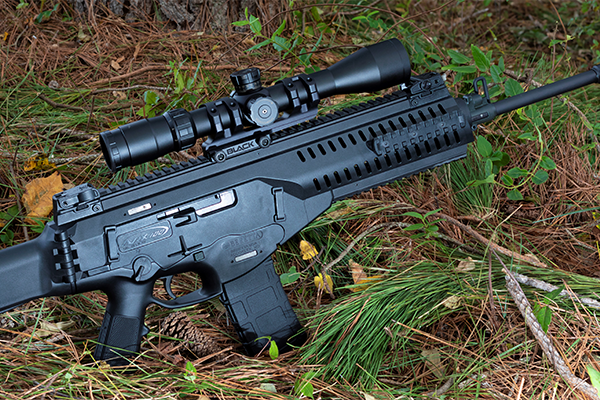
Last Updated on
By Guy J. Sagi
Nikon has broken new ground when it comes to combining performance and value in its new-for-2018 M-Tactical riflescope line. The modest prices are enough to give shooters reservations, but after getting behind some of the optics at length, I have no doubt the quality is there to last a lifetime of headache-free use. If not, Nikon’s No-Fault Lifetime/Repair/Replacement Policy has you covered.
Volumes have been written about the ease of ranging with a mil (milliradian) reticle, but not all shooters need or want to convert from the MOA (minute of angle) system they know well. It still allows for distance estimation to a known-size target, anyway, although the calculations get slightly more involved.
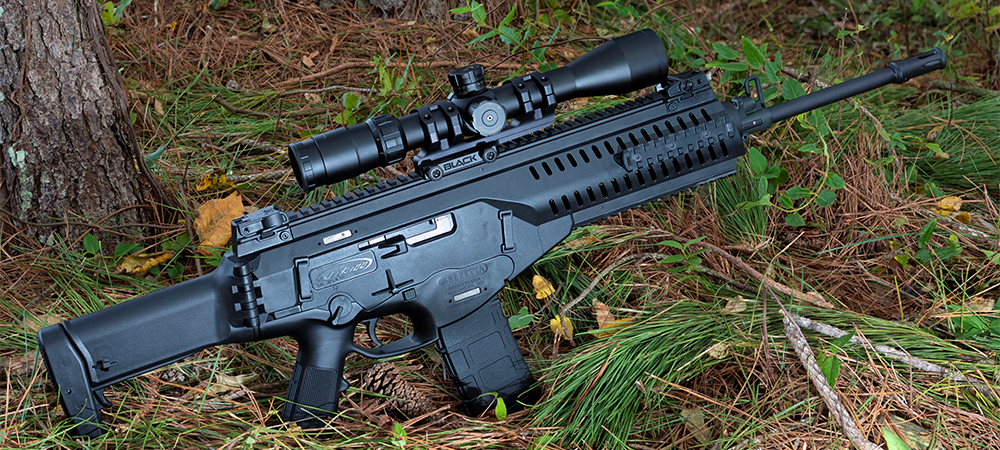
Nikon acknowledges that fact in the M-Tactical Riflescope 3-12x42mm SF by offering it with an MOA-based reticle. Windage and elevation adjustments on the elevated, tactical-style turrets reflect 1/4 MOA per click—unlike a few too many scopes that mix the angular units of measure. The feedback on both dials is positive, palpable and discretely audible. Adjusting point-of-aim/point-of-impact doesn’t require cap removal, a feature designed to speed precise elevation adjustment.
Spring-Loaded Zero Reset
The scope features Nikon’s Spring-Loaded Instant Zero-Reset Turrets, and they are a pleasure. Simply zero the rifle with the preferred load then pull up the turret, hold, rotate to zero, and release. No tools to store somewhere or to get lost. A traveling hunter should always re-zero after arrival, and this feature is a nice advantage when their destination is at a different elevation or under vastly different environmental conditions. The return holds firm, too, so the chances of unintentional adjustment are remote.
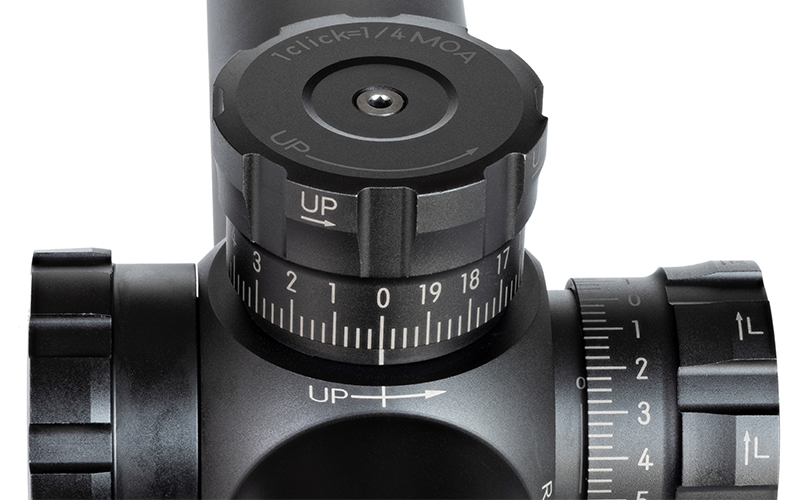
Today’s quality scopes, including this one, feature horizontal lines at the rear bottom of each turret with a number. They reflect how many full rotations have been dialed, and it’s an efficient reference most appreciated after that prone position has gone long enough to forget how much DOPE has been dialed in or trying to minimize movement in a blind. When initially establishing your zero, both the dial and line must agree at their mutual “zeros” to take advantage of the indexing.
Turret diameter at the top (at its widest) is 1 1/4 inches and purchase is easy and positive, even with gloved hands. The words “up” and arrows minimize the chances of adjusting the wrong direction. The windage knob is physically identical, but letters “R” or “L” with direction of rotation arrows help keep those who dial for wind on target.
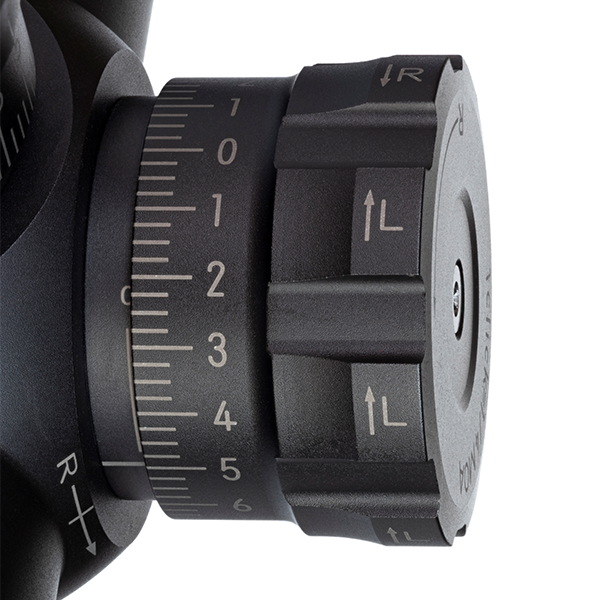
Rugged Construction
The 30-mm tube is drawn from aircraft-grade aluminum alloy and finished with a black, ultra-matte Type III anodizing. Parallax can be adjusted from 50 yards to infinity, and the similarly shaped turret is slightly wider at roughly 1.4 inches. Distance setting is plainly visible from the shooting position.
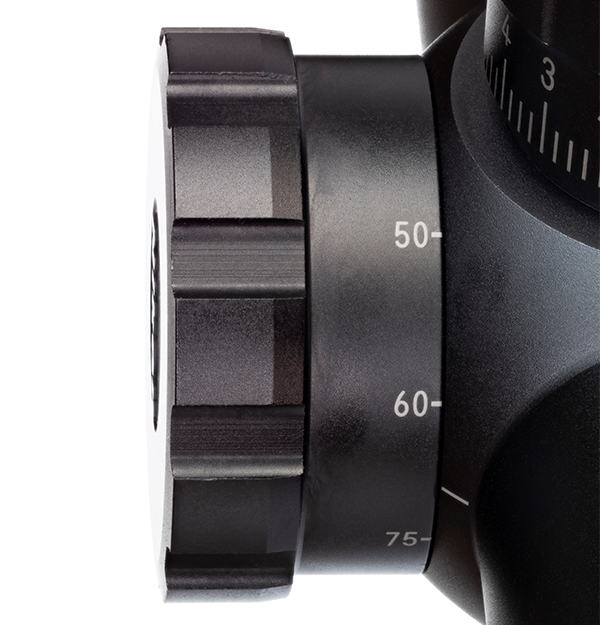
Magnification can be adjusted anywhere from four to 12 power, and the grooved ring to change the setting measures roughly 1.7 inches. Getting a grip on it is a breeze, even when wearing gloves in bad weather. There’s no speed bump to index as you zoom out—increasing field of view—to locate a distant target fast, although most shooters will never notice.
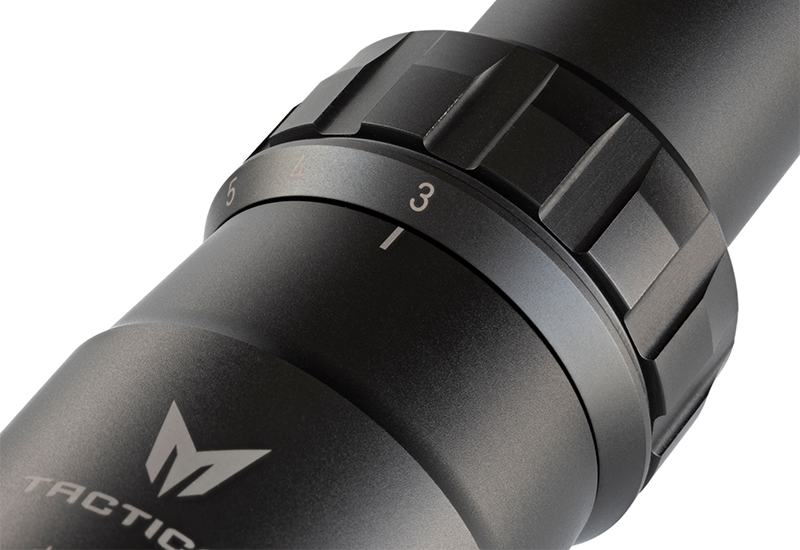
Eye relief isn’t quite constant through the magnification range, but it’s so close it’ will be a challenge to detect any difference. Varying from 3.9 to 3.6 inches you won’t be adjusting cheek weld much, if at all, even when you dial things up. That’s a big advantage, particularly for big-game hunters. The Nikon M-Tactical Riflescope 3-12X42SF has an adjustable diopter, and unlike some bargain-basement optics it actually dials into older eyes that require reading glasses.
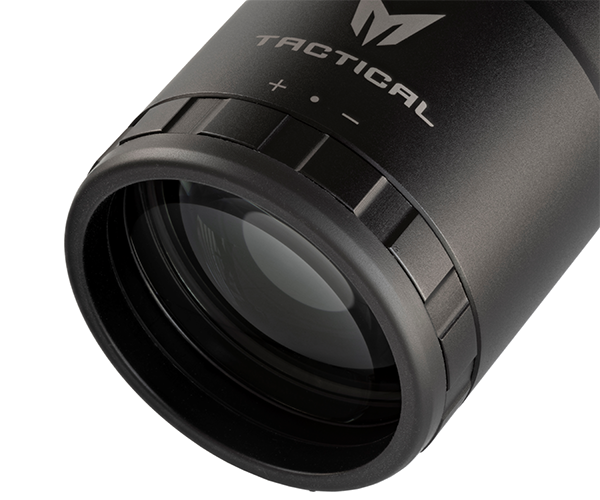
Optic Performance
No optics manufacturer ever discloses the secret sauce that goes into their lens coatings. I’ve asked, many times, sometimes over drinks and have concluded finding out could be hazardous to my health.
The scope has an objective lens of 42 mm and when Nikon introduced the optics line earlier this year at the SHOT Show, it explained, “All lenses are coated with multiple layers of anti-reflective compounds designed to provide bright, high contrast sight pictures and excellent light transmission.”
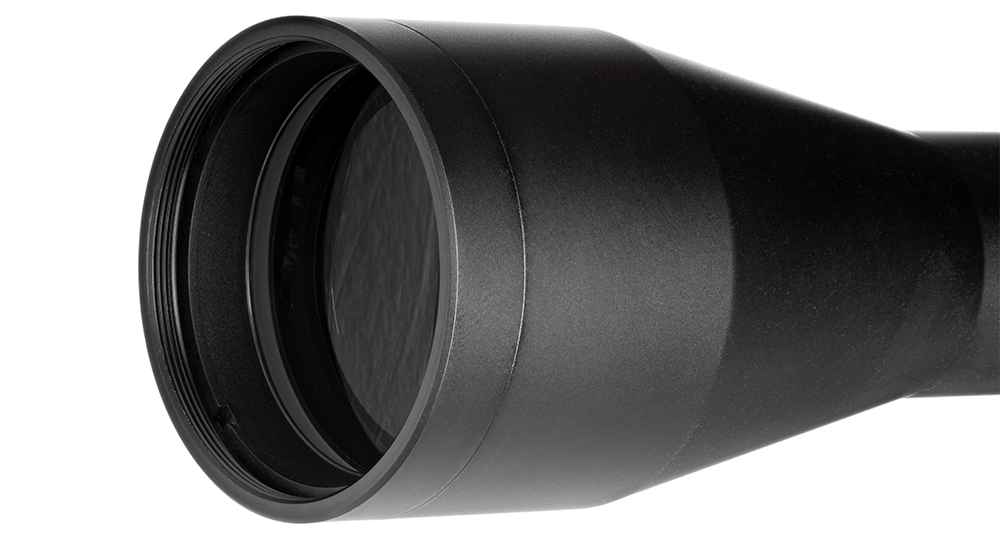
There’s no reason to question the statement when it comes from a firm with an unindictable reputation for producing quality optics, but a session with the Air Force 1951 Optical Test Pattern (at 50 yards) confirms at least part of their statement. At 12 power it resolved group 1 in batch -1. That’s solid performance in the field of view, particularly since mirage was noticeable on the humid 92-degree day oddly calm as Hurricane Florence approached.
No odds colors were noted, aberration or otherwise, even around the edges of the reticle at all powers. A more detailed explanation of the test and its pattern is found in this Nikon Black FX1000 4-16×50 mm SF riflescope review.
The optic collects light extremely well—from sunrise to sunrise—and worked well in dark forest corners when after sunset. Contrast was good and this riflescope can be used, comfortably, for most of the day, without suffering the headaches cheap optics often induce.

Torture Testing
O-ring seals ensure the unit remains watertight, and nitrogen purging prevents internal fogging. To test the claim, the scope was placed in a freezer overnight then “shocked” by introducing it to the heat and humidity of that approaching storm.
Frost covered the body instantly, as expected when moisture in the air collects and freezes on cold metal and glass. Internal glass didn’t fog, and the ice melted and water cleared as the scope finally assumed ambient temperature.

It was mounted on a Beretta ARX100 with a Nikon Black Cantilever Mount and sighted in. Then, at 100 yards, elevation and windage turrets were adjusted to hit the black, lower right in the target box. A shot was then taken while holding dead center on the bullseye and the bullet impacted very near the corner. The results were the same on the other three corners and back to zero—confirming the accuracy of the internal windage/elevation adjustments.
Point of aim didn’t wander after a relatively lengthy range session, either, at least short-term proof that the optic will hold up to some abuse. If not, there’s Nikon’s No Fault Lifetime/Repair/Replacement Policy.
Reticle
Nikon’s MK1-MOA is clean, simple, unlighted in this case and refreshingly uncluttered. Although it’s on the second focal plane—effectively staying the same size at all magnification settings—it’s a familiar crosshair look with hashmarks to index holdovers for elevation or hold-offs when adjusting for windage.
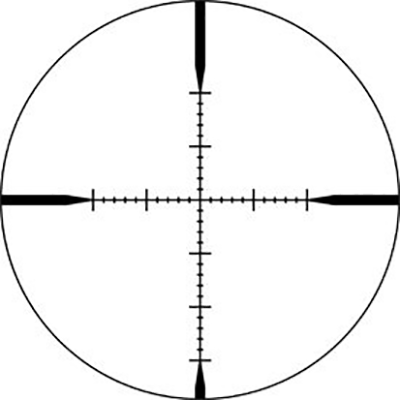
As part of the M-Tactical lineup, though, shooters who prefer a cartridge-specific version can get a choice of caliber-designated BDC 600 and BDC800 reticles, which can be optimized using Nikon’s Spot On Ballistics Technology.
Specifications
Magnification can be varied from four to 12 power and the objective lens is a generous 42mm. Tube size is 30mm and the scope tips the scales at 20 1/2 ounces. Overall length is 13.1 inches.
Parallax is adjustable from 50 yards to infinity. Field of view at 100 yards at the optic’s lowest setting is 37.2 feet and at 12 power that figure narrows to 9.4 feet.
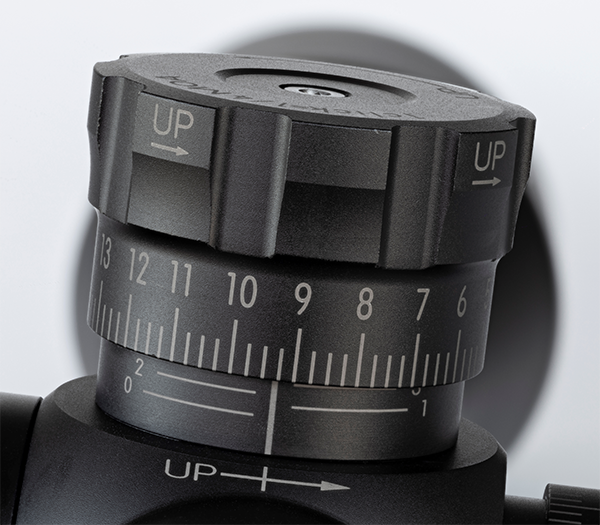
The matte-black finish holds true to its tactical label—Nikon businesslike, with none of the fancy and annoying flourishes some companies embrace. Lens covers come with the riflescope.
Determination
There’s no denying the Nikon M-Tactical Riflescope 3-12×42 mm SF is a winner with the MK1-MOA reticle. It performed flawlessly in testing, reliably and repeatably adjusted and for those enthusiasts less than eager to embrace the mil-rad fad the value is hard to beat, anywhere——especially with this warranty and price.




Leave a Reply